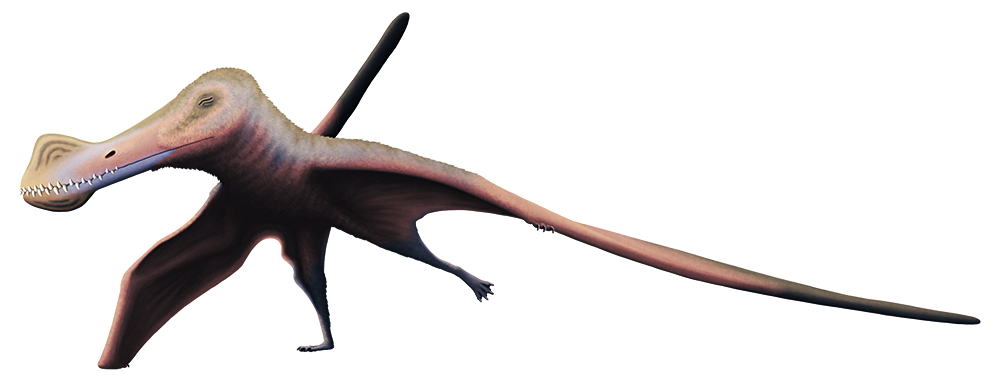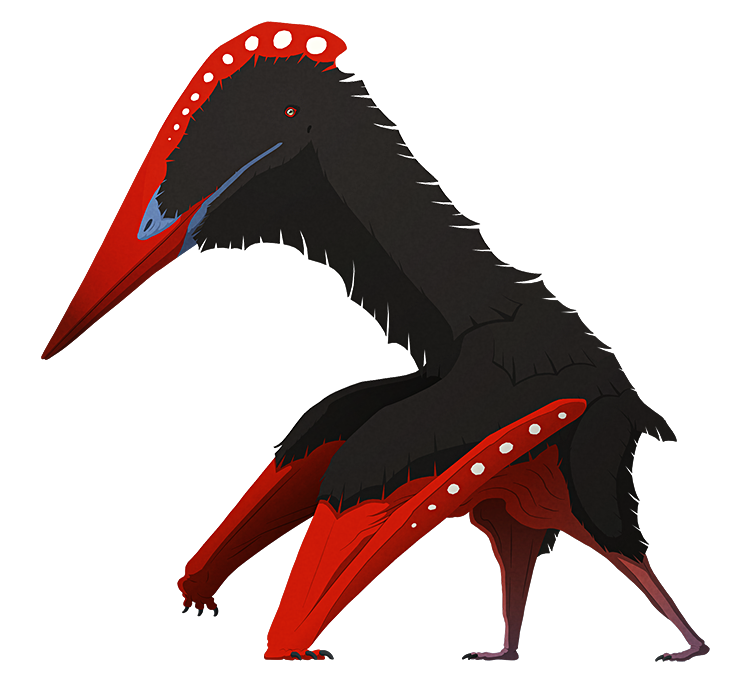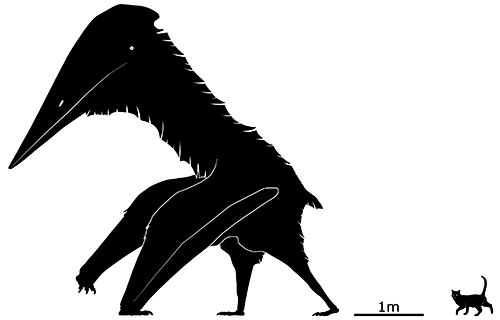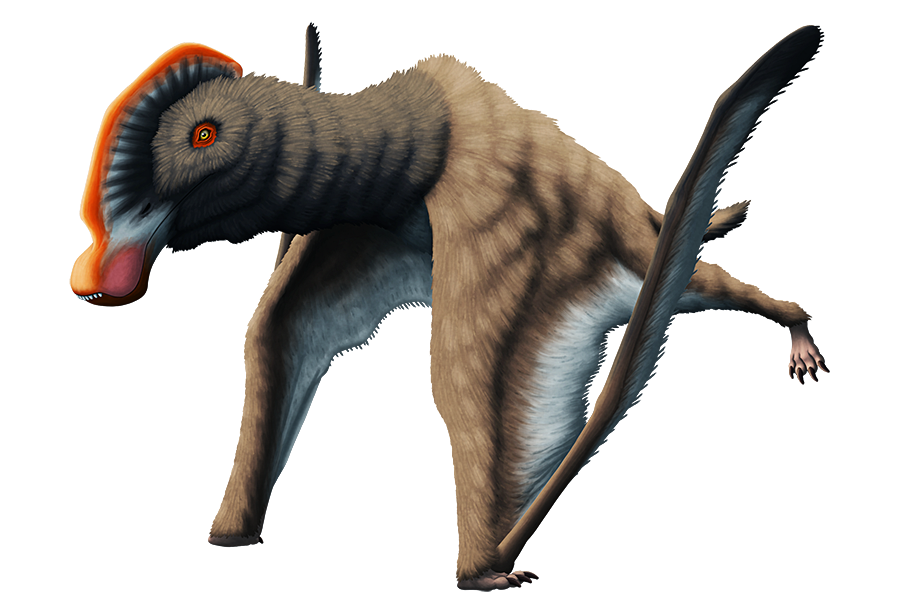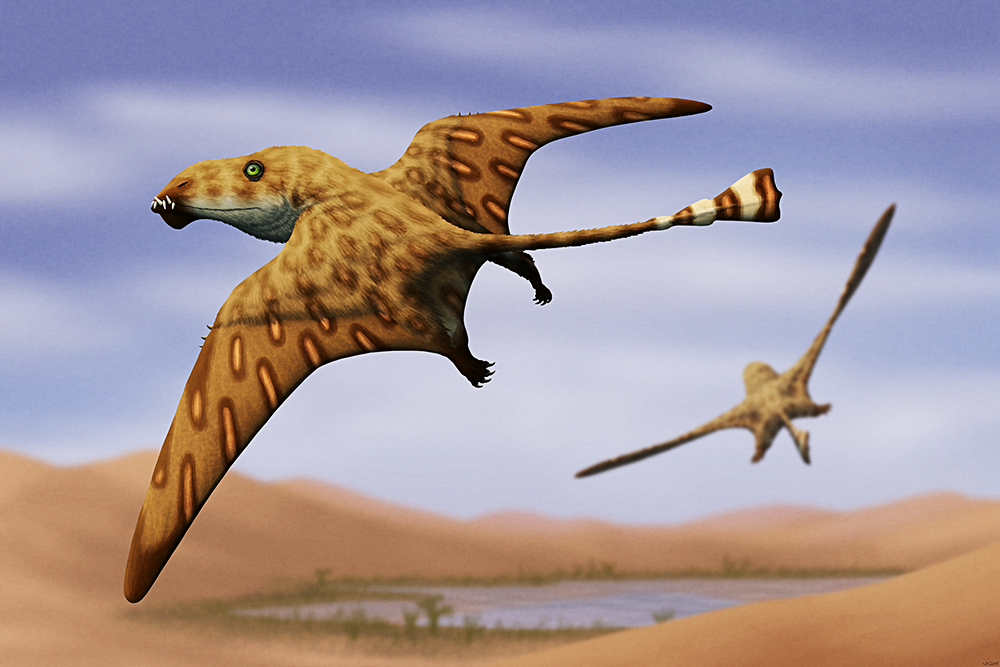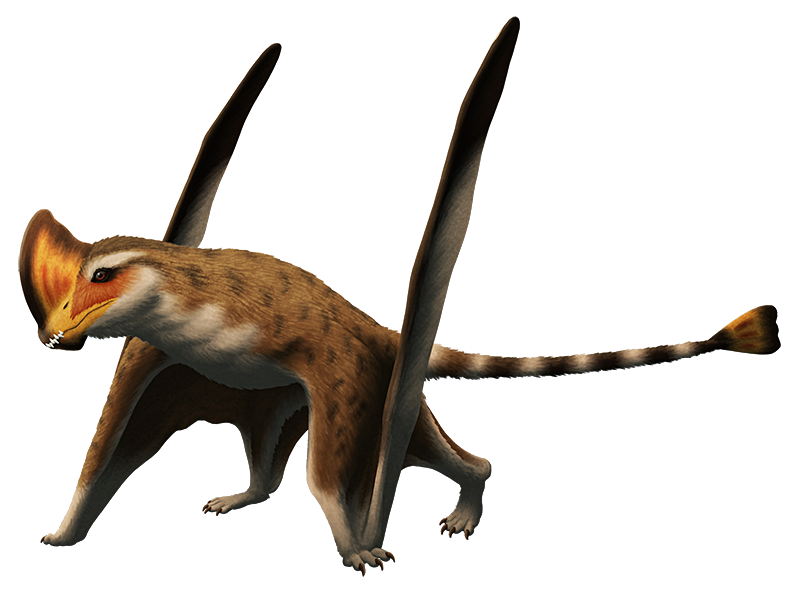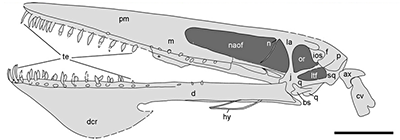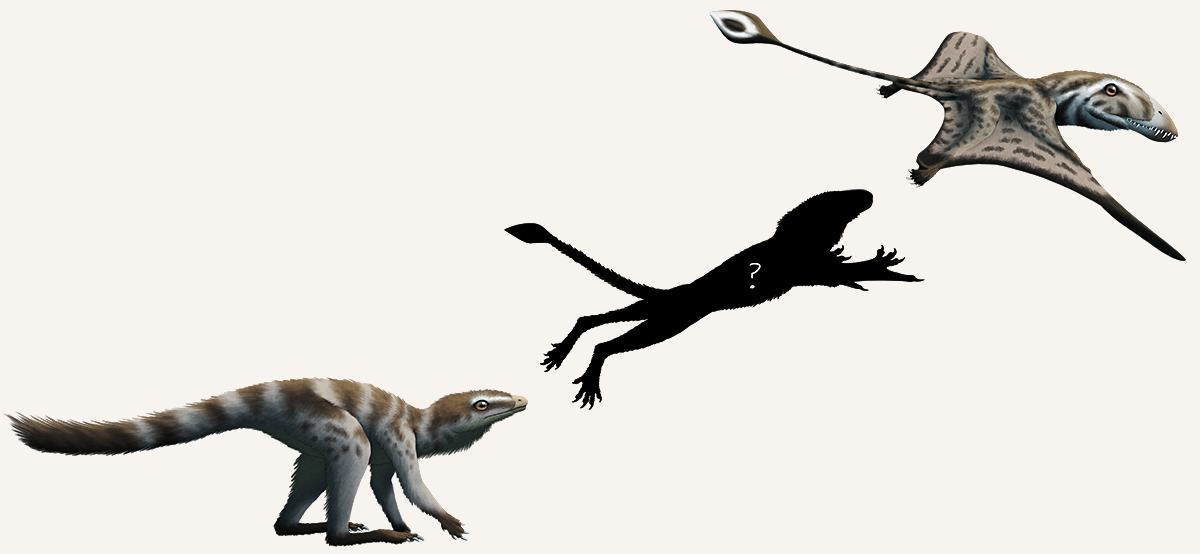Fossils of pterosaurs are already rather rare due to their fragile hollow bones — and they’re especially scarce in Australia, with only a handful of fragments known.
But recently a more complete one was discovered in central-western Queensland.
Ferrodraco lentoni (“Lenton‘s iron dragon”) is named after the ironstone that the fossils were found in, and while it’s known only from a partial skull, some pieces of its neck and wings, and various teeth, it’s still by far the best pterosaur specimen ever found in Australia.
Living during the mid-Cretaceous, somewhere between 94 and 90 million years ago, it had a 4m wingspan (~13′) and was also one of the very last of its kind. It was a member of the ornithocheirids, a group characterized by rounded crests at the tips of their long toothy jaws, which were previously thought to have all gone extinct by that time.
Many of Australia’s Cretaceous animals were close relatives of those found in South America, due to an earlier land connection via Antarctica, but surprisingly Ferrodraco wasn’t particularly closely related to any South American ornithocheirids. Instead it seems to have been part of a lineage known from halfway around the world in Europe, suggesting that these pterosaurs were capable of crossing long distances over oceans to disperse between continents.

